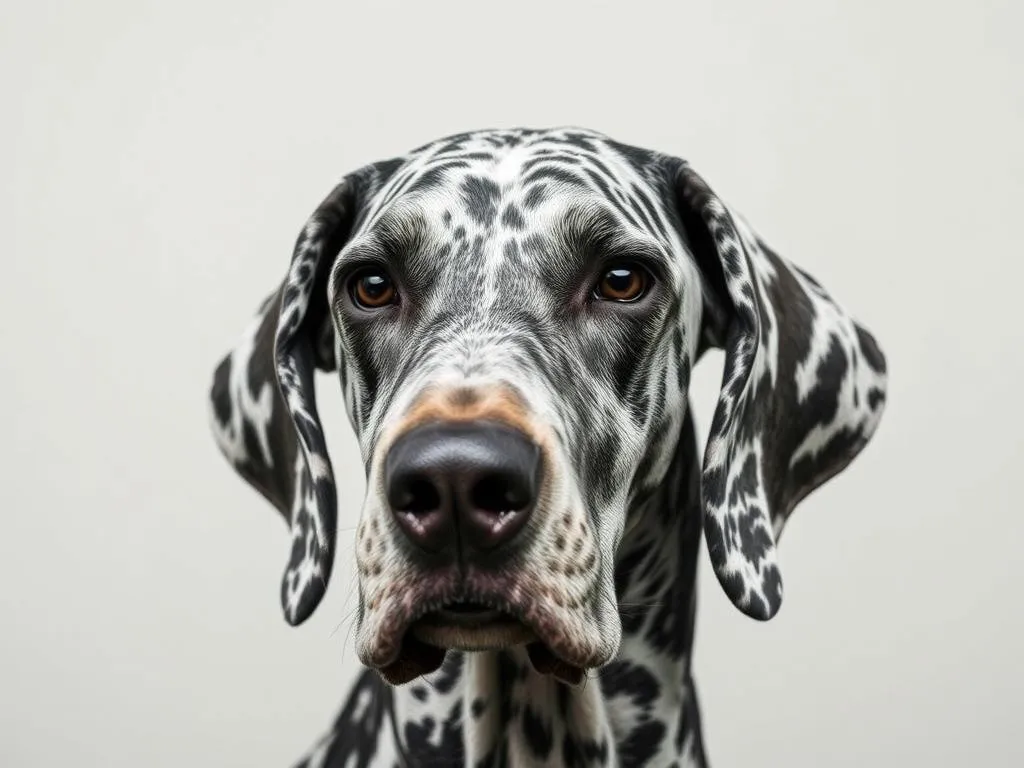
Great Danes are often referred to as “gentle giants.” Their impressive stature, combined with a friendly disposition, makes them a popular choice for families. Originating from Germany, Great Danes were initially bred for hunting large game and have since transformed into loyal companions. Their characteristics include a well-muscled body, long legs, and a short, smooth coat. While their size can be intimidating, their affectionate nature often wins over hearts.
As with any dog breed, understanding shedding is crucial for potential owners. Shedding can significantly impact your home environment, especially for those with allergies. Knowing how much do Great Danes shed can help you prepare for pet ownership and maintain a clean living space.
Understanding Shedding in Dogs
What is Shedding?
Shedding is a natural process where dogs lose old or damaged hair. This cycle helps maintain a healthy coat and regulate body temperature. Various factors can influence shedding, such as breed, age, health, and even seasonality.
The Shedding Cycle
The shedding cycle consists of three main phases:
- Anagen: The growth phase, where hair follicles actively produce new hair.
- Catagen: The transitional phase, where hair stops growing and detaches from the blood supply.
- Telogen: The resting phase, where hair remains in place until it eventually falls out.
Dogs may experience seasonal shedding, where they lose more fur during specific times of the year, often in spring and fall. However, some breeds shed year-round.
Shedding in Great Danes
Breed-Specific Shedding Characteristics
Great Danes have a short, smooth coat that sheds moderately. Their coat type contributes to their lower maintenance needs compared to other breeds with longer fur. However, it’s essential to understand that even with a short coat, shedding can still be a concern for some pet owners.
How Much Do Great Danes Shed?
On average, Great Danes shed less than many other large breeds. Their shedding levels are moderate, and while they do lose hair throughout the year, it’s typically not excessive. During seasonal changes, you may notice an increase in shedding, but this is normal for the breed.
Factors Affecting Shedding in Great Danes
Genetics and Individual Variation
Genetics plays a significant role in determining how much a Great Dane sheds. Some individuals may shed more than others based on hereditary factors. If you’re considering adopting a Great Dane, it’s worth asking about the shedding tendencies of the puppy’s parents.
Diet and Nutrition
The diet of your Great Dane can directly impact the health of their coat and shedding levels. A balanced diet rich in omega fatty acids can promote a shiny coat and potentially reduce shedding. Foods that are high in protein and contain essential vitamins and minerals will also support overall coat health.
Health Conditions
Certain health conditions can lead to increased shedding in Great Danes. Skin allergies, hormonal imbalances, and parasitic infections can all contribute to hair loss. Regular veterinary visits are essential to ensure your Great Dane remains healthy and to address any shedding concerns.
Managing Shedding in Great Danes
Grooming Techniques
Proper grooming is crucial for managing shedding in Great Danes. While their short coat doesn’t require extensive grooming, regular brushing can help remove loose hair. Recommended tools include:
- Slicker Brush: Effective for removing loose hair and debris.
- Rubber Grooming Mitt: Great for a gentle grooming experience.
- De-shedding Tool: Useful for those periods of increased shedding.
Aim to brush your Great Dane at least once a week, increasing the frequency during shedding seasons.
Home Cleaning Tips
To minimize hair in your home, consider implementing the following practices:
- Regular Vacuuming: Invest in a vacuum designed for pet hair.
- Lint Rollers: Keep these handy for quick clean-ups on furniture and clothing.
- Washable Covers: Use covers on couches and beds to make cleaning easier.
Supplements and Diet Adjustments
Certain supplements can help reduce shedding and improve coat health. Omega-3 and Omega-6 fatty acids are known to support skin and coat health. Consult with your veterinarian before adding any supplements to your Great Dane’s diet. Additionally, focus on incorporating foods rich in these fatty acids, such as fish or flaxseed oil.
Lifestyle Considerations for Great Dane Owners
Preparing Your Home
Before bringing a Great Dane home, consider pet-proofing your space. This includes:
- Designating a Pet Area: Set up a comfortable space where your Great Dane can relax.
- Choosing Pet-Friendly Fabrics: Opt for materials that are easier to clean and less likely to attract hair.
Time Commitment for Grooming and Care
Owning a Great Dane requires time and dedication. Expect to invest time in grooming, which will help manage shedding. Regular cleaning routines are also essential to keep your home hair-free.
Health and Wellness Practices
Regular exercise is vital for maintaining the health of your Great Dane. Ensure they receive adequate physical activity to prevent obesity, which can exacerbate shedding. Regular vet check-ups are also essential, as they can help identify any health issues that may contribute to excessive shedding. Creating a stress-free environment for your Great Dane will further support their overall well-being.
Conclusion
Understanding how much do Great Danes shed is crucial for anyone considering welcoming one into their home. While they do shed moderately, proper grooming, diet, and health care can significantly manage shedding levels. By being informed and prepared, you can enjoy the companionship of a Great Dane while keeping your living space comfortable and clean.
For potential owners, shedding should be an essential consideration in your decision-making process. The joy of having a Great Dane as part of your family far outweighs the challenges that may come with their shedding.
Frequently Asked Questions (FAQ)
Do Great Danes shed more than other large breeds?
Great Danes tend to shed less than many other large breeds, such as Retrievers or Shepherds, due to their short coat.
What time of year do Great Danes shed the most?
Great Danes typically experience increased shedding during the spring and fall as they adapt to changing temperatures.
Can you reduce shedding in Great Danes?
Yes, you can reduce shedding in Great Danes with proper grooming, a balanced diet, and regular veterinary care.
Are there hypoallergenic breeds similar to Great Danes?
While there are no hypoallergenic breeds identical to Great Danes, some breeds, such as the Standard Poodle, may be suitable alternatives for allergy sufferers.









